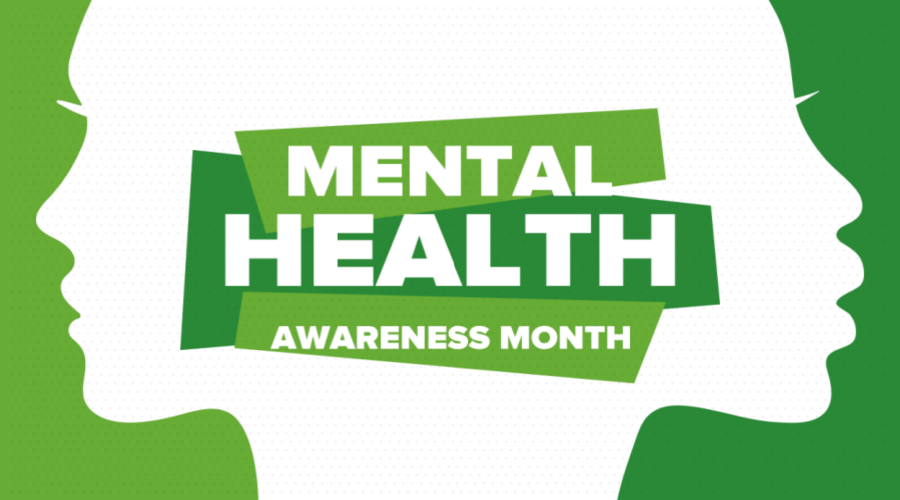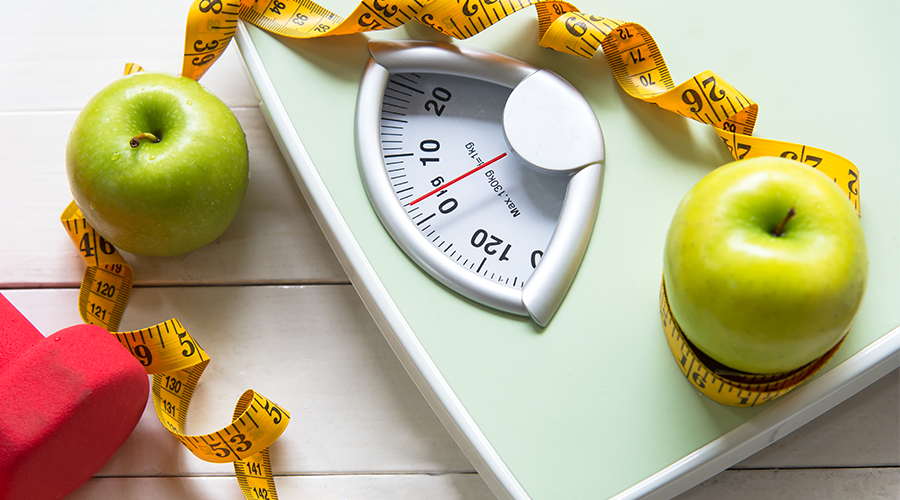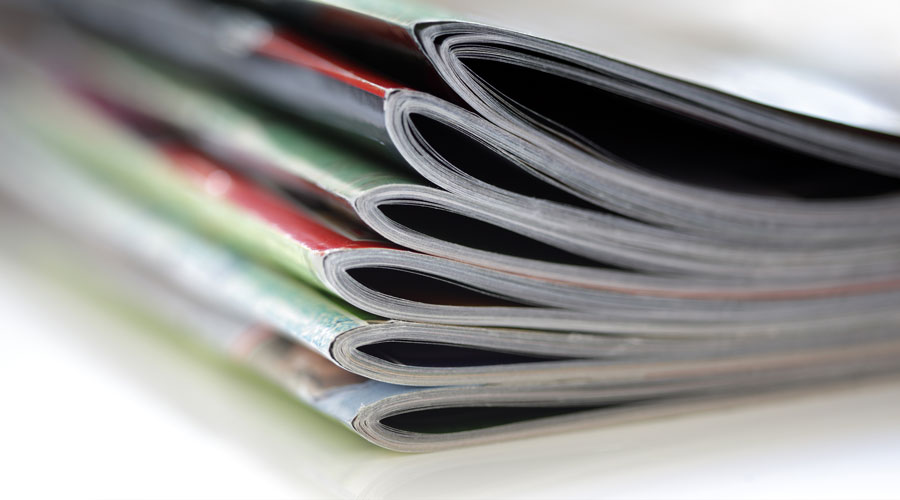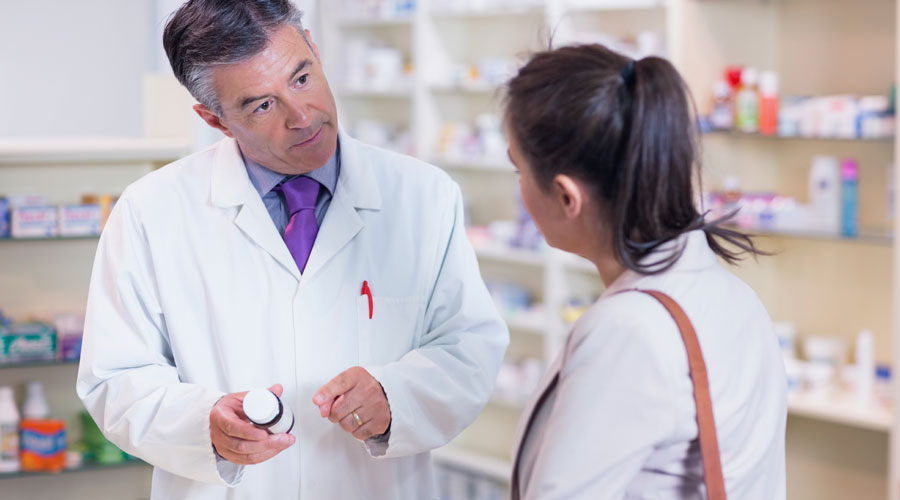Inside: Don’t let good deals and flash sales on pharmaceuticals put your independent community pharmacy at risk. Learn how to protect your pharmacy by verifying the credibility of your pharmaceutical wholesalers.
Profit margins matter to independent community pharmacies more than ever today. Shrinking reimbursements are forcing independent pharmacy owners to search widely for better margins, often resulting in shopping multiple secondary distributors to try to save money where they can. With large pharmaceutical wholesalers, regional and specialty wholesalers, and thousands of small companies licensed by U.S. states as merchant wholesalers to choose from, the options and potential savings can seem endless.
But buyer beware: Those savings could come at a high cost.
“There is a network of rogue wholesale drug distributors that target healthcare practitioners using aggressive marketing tactics and offering medications at deeply discounted rates,” said Jeremy Kahn, a spokesperson for the U.S. Food and Drug Administration (FDA).
Illegitimate distributors introduce substandard and counterfeit products into the drug channel, and they often come with an attractive price tag.
Substandard and counterfeit pharmaceuticals can include:
- Wrong dose
- No active ingredient
- Wrong active ingredient
- Harmful ingredients
- Be ineffective
- Be contaminated
If you don’t know who’s credible, you could expose your pharmacy and your patients to dangerous products.
“The risks are significant,” said Carmen Catizone, M.S., R.Ph., D.Ph., Executive Director of the National Association of Boards of Pharmacy (NABP). “First and foremost, the patients of that pharmacy can be injured or killed by counterfeit products or adulterated and misbranded products.”
In one far-reaching incident in 2003, investigators discovered that more than 100,000 bottles of Epogen® were counterfeit after a liver-transplant patient experienced crippling spasms and debilitating health problems for months while taking the medicine. The drug’s labels had been forged to indicate a dosage strength 20 times the actual dose.
That’s one of the many recorded stories of patients who have suffered from counterfeit or substandard drugs. The worst cases involve life-saving drugs for conditions like cancer and autoimmune disease. But even the smaller cases, like one involving a drug that treats cholesterol, can still harm patients.
These risks make it paramount for independent pharmacies to ensure the credibility of their distributors, said Rebecca Snead, R.Ph., FAPhA, CEO and Executive Vice President of the National Alliance of State Pharmacy Associations (NASPA).
“It is the right thing to do for our patients. The pharmacy profession was founded on the platform of assuring patients have access to a safe and effective drug supply. One adverse effect due to selling an illegal, contaminated, or unapproved drug—or even worse, death—is too many.”
Liability for Independent Pharmacies
Besides the concerns of harming patients, buying from illegitimate pharmaceutical wholesalers can also result in financial consequences for pharmacies. “The pharmacy would also incur significant liabilities in regard to the licensure of the facility and individual pharmacists and civil responsibility for patient harm or death,” Catizone said.
Liabilities could also include criminal charges, even if you aren’t aware that you bought or dispensed illegitimate pharmaceuticals. The FDA includes a statement to healthcare practitioners on its website that says:
“If you purchase drugs from illegal, unlicensed sources (foreign or domestic) you are putting your patients at risk of consuming drugs that may be unapproved, counterfeit, contaminated, ineffective, or dangerous. If you purchase drugs from illegal sources you may be subject to criminal investigation.”
Since 2012, the Department of Justice has prosecuted more than 95 corporations and individuals for criminal charges related to selling unapproved drug products or receiving and administering unapproved drug products to patients.
And liability isn’t the only threat to your pharmacy business. Harm to patients’ health inevitably leads to harm to your pharmacy practice.
“We’re in the quality health care business. If you’re going to provide quality health care to patients, you have to have a quality product,” said Nicholas Smock, Pharm.D., MBA, President and CEO of PBA Health, an independently owned, VAWD-accredited distributor and pharmacy services organization based in Kansas City, Mo.
“If you don’t have integrity in your pharmaceutical product, how could you have integrity in your health care? You need to provide 100 percent in the quality of your product and 100 percent in your services.”
Understanding the Drug Distribution Channel
The drug distribution channel is a complicated web of interchange. Nearly 40 percent of finished drugs are imported, according to the FDA. And, nearly 80 percent of active ingredients come from overseas sources. Ingredients can be sourced from one country, packaged in another, and then repacked in another.
Often, you can draw a straight line from manufacturer to distributor to pharmacy within the U.S. But sometimes, drugs may bounce from one manufacturer to several different pharmaceutical wholesalers, and even pharmacies, before finally ending up at your pharmacy.
“A pharmacy buyer should always ask the seller where the product is sourced from and about the storage conditions used to handle it,” Smock said.
Although the U.S. distribution channel is heavily regulated and one of the safest in the world, loopholes exist that opportunistic distributors exploit.
For example, they seek licensure in states with the fewest requirements and least stringent enforcement. They buy pharmacies to function as distributors, so they can sell drugs to other wholesale distributors under the guise of a medical emergency transfer. And, some pharmacies that supply nursing homes and hospices order huge quantities of drugs at discounted prices and sell the excess to secondary distributors for profit.
But even without fraud, medicine can become adulterated through improper storage and handling. For example, refrigerated products that change hands can easily lose potency and effectiveness without the right storage conditions.
The Most Common Way Illegitimate Drugs Get in the Supply Chain
And here’s the biggest takeaway for your pharmacy today: The most common culprits are secondary distributors. And, these fraudulent distributors often appear to have legitimate standing.
In a 2013 report on the rising problem of the integrity of the prescription drug supply, the NABP said the incidents “point to the roles of licensed wholesalers in distributing counterfeit drugs and unapproved foreign-sourced oncology drugs.”
In many of the fraud cases, independent pharmacies were unknowing accomplices. They purchased pharmaceuticals from licensed secondary distributors they thought were legitimate.
Which leads to the question, then how can pharmacies avoid counterfeit and substandard drugs?
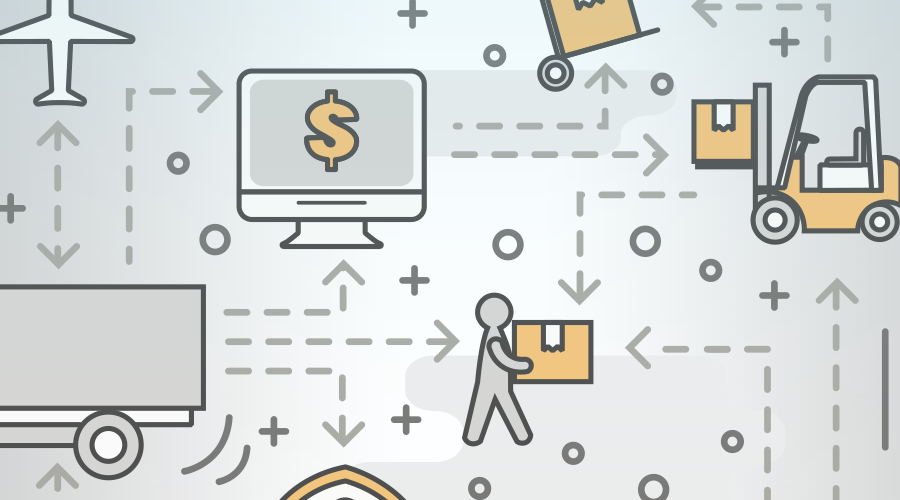
How to Know Which Pharmaceutical Wholesalers to Trust
The best way for pharmacies to avoid dispensing substandard and counterfeit drugs is to take proactive steps to verify the credibility of every pharmaceutical wholesaler they buy from.
“Where you see the counterfeit and fraudulent drug channel is when people take risks with how they’re doing their purchasing,” said Perry Fri, Executive Vice President of Industry Relations, Membership and Education for the Healthcare Distribution Alliance (HDA) and COO of the HDA Research Foundation.
“Are you buying from a company that you don’t know anything about?”
Requirements by law
At the basic level, your pharmacy is required to perform certain due diligence under national law. “Today, there’s pretty specific requirements that are put onto pharmacies in terms of who they should be doing business with and what they should expect from that business relationship,” Fri said.
In 2013, Congress passed the Drug Supply Chain Security Act (DSCSA, or Title II of the Drug Quality and Security Act), which created measures to enhance pharmaceutical traceability.
“The DSCSA creates a tighter, closed prescription drug distribution system to prevent harmful drugs from entering the supply chain, detect harmful drugs if they do enter the supply chain, and enable rapid response when such drugs are found,” Kahn said.
The DSCSA creates a national, interoperable, electronic system to track and trace pharmaceuticals all the way through the drug channel. The law is being implemented gradually through 2023 and it requires pharmacies to be more stringent with recordkeeping and verifying licensure, among other requirements.
If you need help complying with the provisions of the DSCSA, Snead said state pharmacy associations have resources in partnership with the American Pharmacists Association (APhA), the National Community Pharmacists Association (NCPA), and the Partnership of Safe Medicines.
Looking at pedigree
But pharmacies need to go beyond the track and trace requirements, especially as the law phases in gradually because vulnerabilities still exist.
Smock said verifying the credibility of distributors requires two things:
- Evaluating their pedigree
- Making sure they have the right credentials
“The number one thing is, ‘Does the distributor buy directly from the manufacturer?’” Smock said. “Ask them for their pedigree and see where they’re actually buying it from. With pharmaceuticals, there should be a valid paper trail. And raise concerns about the price if it seems too good to be true.”
The FDA also advises healthcare professionals to know the source of the prescription drugs they purchase. The distributor’s pedigree should verify that it sources all of its product directly from the manufacturer.
Pedigree is a good start to ensuring credibility, but it’s not enough on its own.
For one thing, each state’s requirements vary. And, some states don’t require pedigrees at all. For another, illegitimate pharmaceutical wholesalers can create false paper trails with sparkling records. In 2012, fraudulent distributors falsified their pedigree while distributing more than $1 billion in diverted drugs to unwitting pharmacies.
The right credentials
To ensure your distributor’s credibility, look for certain credentials. “You’ve got to look at the credentialing body,” Smock said.
State licensure is the basic requirement for a credible distributor. And you can verify wholesale drug distributor licenses on the FDA’s website.
But licensure on its own can’t give your pharmacy complete assurance of a distributor’s credibility. Every state has its own standards of practice required for distributors to obtain licenses. Some states have stricter requirements than others, which makes it easier for distributors to obtain licenses in some states and makes it harder for pharmacies to know which distributors they can trust.
Catizone said that some states don’t have the resources to regularly review and verify distributors to ensure they maintain licensure standards.
“In some cases that NABP encountered, unscrupulous wholesale distributors deliberately misrepresented licensure, falsified information to indicate licensure when the facility was not licensed, did not report that a license was revoked or suspended, and withheld licensure status in order to avoid disclosing disciplinary actions against a license,” she said.
Look for Drug Distributor Accreditation (formerly VAWD)
In 2004, the NABP set a higher and more unified standard by creating an accreditation program for drug distributors called Drug Distributor Accreditation.
To become accredited, distributors must pass the NABP’s compliance review process, which includes:
- Rigorous review of operating policies and procedures
- Licensure verification
- Survey of a facility’s operations
- Screening through the NABP Clearinghouse
“Drug Distributor Accreditation plays a pivotal role in preventing counterfeit drugs from entering the United States’ drug supply,” said Catizone. “Drug Distributor Accreditation helps ensure that the wholesale distribution facility operates legitimately, is licensed in good standing, and is employing security and best practices for safely distributing prescription drugs from manufacturers to pharmacies and other institutions.”
Unlike licensure, Drug Distributor Accreditation standards apply equally to every pharmacy no matter the state they reside in. When you work with accredited distributors, you know they’ve met the strictest standards that currently exist.
Several states including Indiana, North Dakota, and Wyoming require Drug Distributor Accreditation for licensure.
Optum Rx, a pharmacy benefits manager (PBM) that processes nearly 20 percent of the nation’s prescriptions, announced in 2016 that pharmacies that contract with the company must only buy from accredited pharmaceutical wholesalers. Optum will no longer pay for any claims that don’t come from accredited wholesalers, and it could charge additional clawbacks and may even revoke contracts.
Check for HDA membership
Another element pharmacies can look for when choosing pharmaceutical wholesalers is membership in the Healthcare Distribution Alliance (HDA).
HDA, formerly the Healthcare Distribution Management Association (HDMA), represents primary pharmaceutical distributors. Its members include 36 pharmaceutical distributors throughout the U.S. And it serves as a link between the nation’s pharmaceutical manufacturers and more than 200,000 pharmacies, hospitals, long-term care facilities, clinics, and other facilities.
Although HDA isn’t a credentialing body, it gives pharmacies assurance because of its sourcing verification. “Our members are companies that typically are part of what we’d call the direct supply chain,” Fri said. “So, they buy directly from manufacturers and sell directly to the pharmacy.”
Additionally, the HDA constantly works to improve supply chain security in a variety of ways among distributors.
“The safest and most secure supply chain is at the core of our mission statement, so everything we do aligns with that,” Fri said. Among other initiatives, it offers educational opportunities, industry forums, and guidelines. “We do a lot of work on the supply chain side. How can we advance business process, technologies, logistics, operations to make the supply chain safer and more efficient?”
How to Spot Fraud and Illegimiate Drugs
If your pharmacy’s pharmaceutical wholesalers carry the right credentials, you’re in good shape. But there’s always a risk of falsified credentials and other factors. So, look out for the warning signs of substandard and counterfeit pharmaceuticals.
The main sign of a counterfeit drug is lack of effectiveness. If multiple patients report a lack of efficacy or if a normally effective drug stops working, make sure to inspect the product.
Kahn suggested pharmacists check the Orange Book, which is also called, Approved Drug Products with Therapeutic Equivalence Evaluations. It identifies drug products approved by the FDA and related patent and exclusivity information.
In addition, pharmacists can visually inspect the drugs before handing them to the patient, Kahn said.
Suspicious signs to look for:
- Misspelled words
- Foreign language
- Missing lot number
- Outdated expiration date
- Missing “Rx Only”
- Unfamiliar labeling
In the Epogen case, the counterfeit bottles were identified by missing degree symbols in the temperature instructions.
Also, aggressive offers are a telltale sign of fraud. “If you receive a call that is too good to be true, it probably is,” Snead of NASPA said. “Make sure you verify before you buy.”
The FDA has also created a toolkit pharmacies can use called the Supply Chain Security Toolkit for Medical Products. It can help you develop processes, procedures, and tools for product quality and supply chain security.
“These materials provide overviews of clinical and retail pharmacy practices across APEC economies, identifying best practices and resources to support implementation toward ensuring the quality of drugs that reach patients,” Kahn said.
Sneaky Strategies Illegitimate Pharmaceutical Wholesalers Use
Many illegitimate pharmaceutical wholesalers gain licensure in states with less stringent requirements or lax enforcement.
These distributors seek licensure in states where:
- The state doesn’t require pedigrees
- Licensure of out-of-state wholesale distributors is either optional or not required at all
- Wholesale distributors can register for one wholesale distribution license and use the same license across the country for several entities
- Inspection requirements for wholesale distributors are lacking
- A wholesale license is issued to a wholesaler with the same name and address as a pharmacy
Source: National Association of Boards of Pharmacy (NABP)
Warning Signs of Counterfeit Drugs
Look out for these indicators of counterfeit drugs:
- Product packaging and label aren’t in English
- Words are misspelled on the bottle
- “Rx Only” designation is absent
- The expiration date is missing or has passed
- The lot number is omitted
- Generic name or active ingredient isn’t printed with brand name
- Product appearance, packaging, prescribing information, labeling, or indications for use are unfamiliar
- Patient labeling or product information are missing
Source: U.S. Food and Drug Administration (FDA)
Questionable Actions of Illegitimate Pharmaceutical Wholesalers
How do rogue distributors get away with their actions? Sometimes they use loopholes like these.
Seeking out states with less stringent laws
Because some states have stricter laws than others, illegitimate distributors will often apply for licensure in states with the fewest requirements.
Taking advantage of the “5 percent rule”
Some states allow pharmacies to sell drugs to other pharmacies and wholesalers as long as the sale of those drugs doesn’t exceed 5 percent of the pharmacy’s annual prescription drug sales. Illegitimate pharmacies will abuse this allowance and sell more than 5 percent.
Manipulating the emergency transfer exemption
Pharmacies can sell drugs to distributors during medical emergencies without being deemed a distributor. So, illegitimate pharmacies will use the pretense of a medical emergency to sell drugs to distributors.
Exploiting drug shortages
Fake pharmacies will find out which drugs are in short supply at hospitals, buy up far more than they need, and then sell them to the gray market. During the shortages, companies will charge hospitals 1,000 times the cost of the drug.
Using an intracompany transfer
Transferring drugs between companies under common ownership isn’t considered distribution. Illegitimate companies use several strategies to disguise transactions between pharmacies and distributors as intracompany transfers.
Source: National Association of Boards of Pharmacy (NABP)
Following the Law
Under the Drug Supply Chain Security Act (DSCSA), enacted in 2013 and which is being phased in through 2023, independent pharmacies have certain requirements to help keep the drug supply chain safe.
Here’s what the law requires pharmacies do:
- Confirm the entities from which they purchase prescription drugs are licensed
- Receive, store, and provide product tracing documentation
- Investigate and properly handle suspect and illegitimate drugs, including quarantining the drugs and
- Notify the FDA and trading partners if they find an illegitimate drug
Source: U.S. Food and Drug Administration (FDA)
A Member-Owned Company Serving Independent Pharmacies
PBA Health is dedicated to helping independent pharmacies reach their full potential on the buy-side of their business. Founded and owned by pharmacists, PBA Health serves independent pharmacies with group purchasing services, wholesaler contract negotiations, proprietary purchasing tools, and more.
An HDA member, PBA Health operates its own NABP-accredited secondary wholesaler with more than 6,000 SKUs, including brands, generics, narcotics CII-CV, cold-storage products, and over-the-counter (OTC) products — offering the lowest prices in the secondary market.








